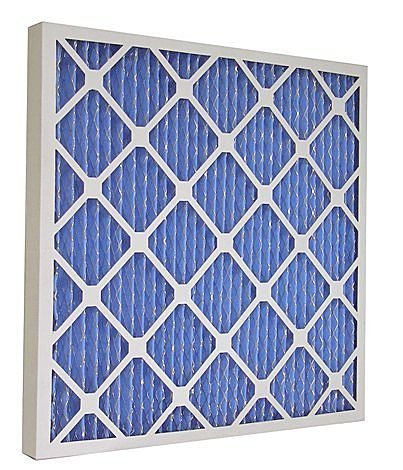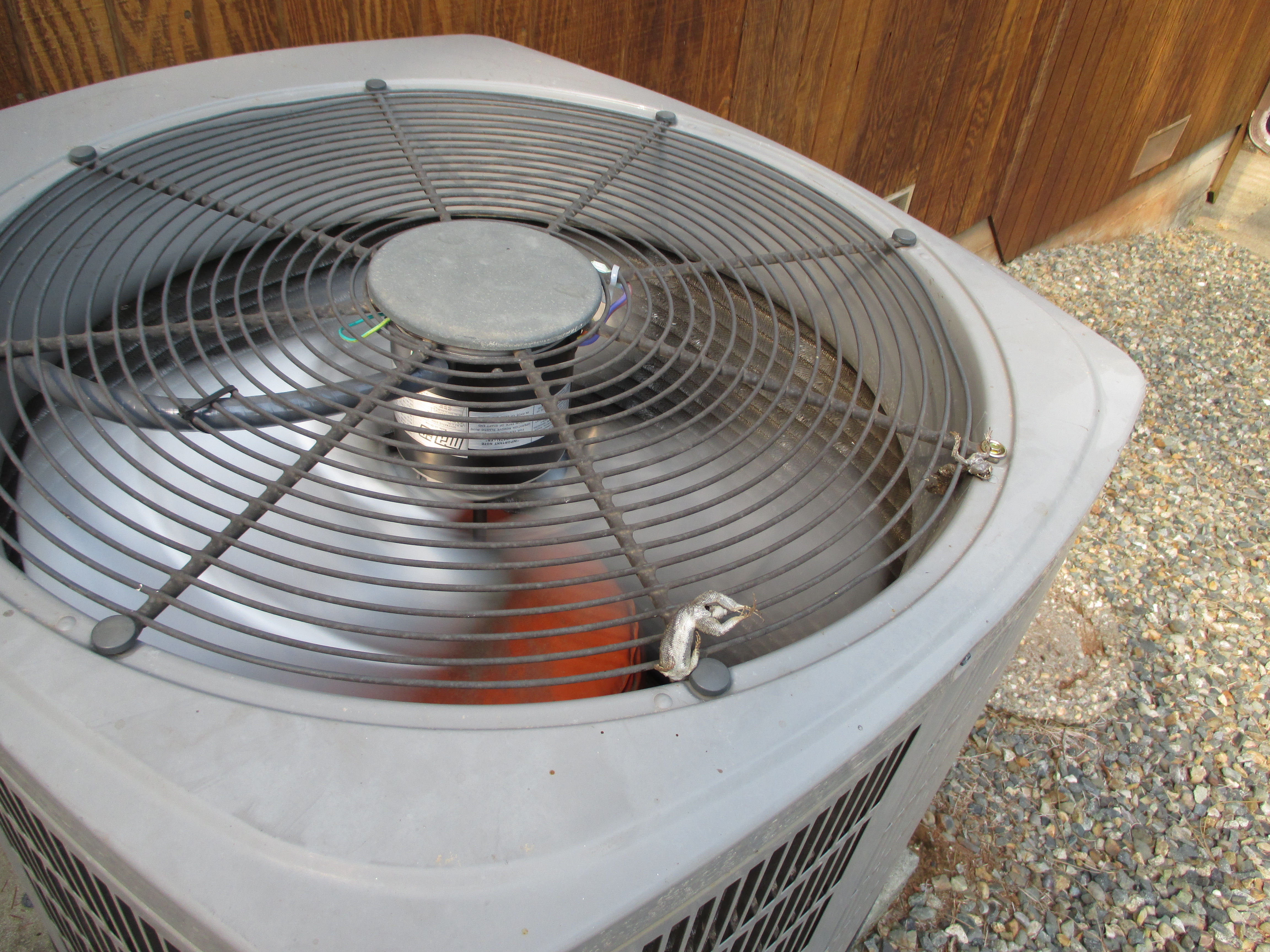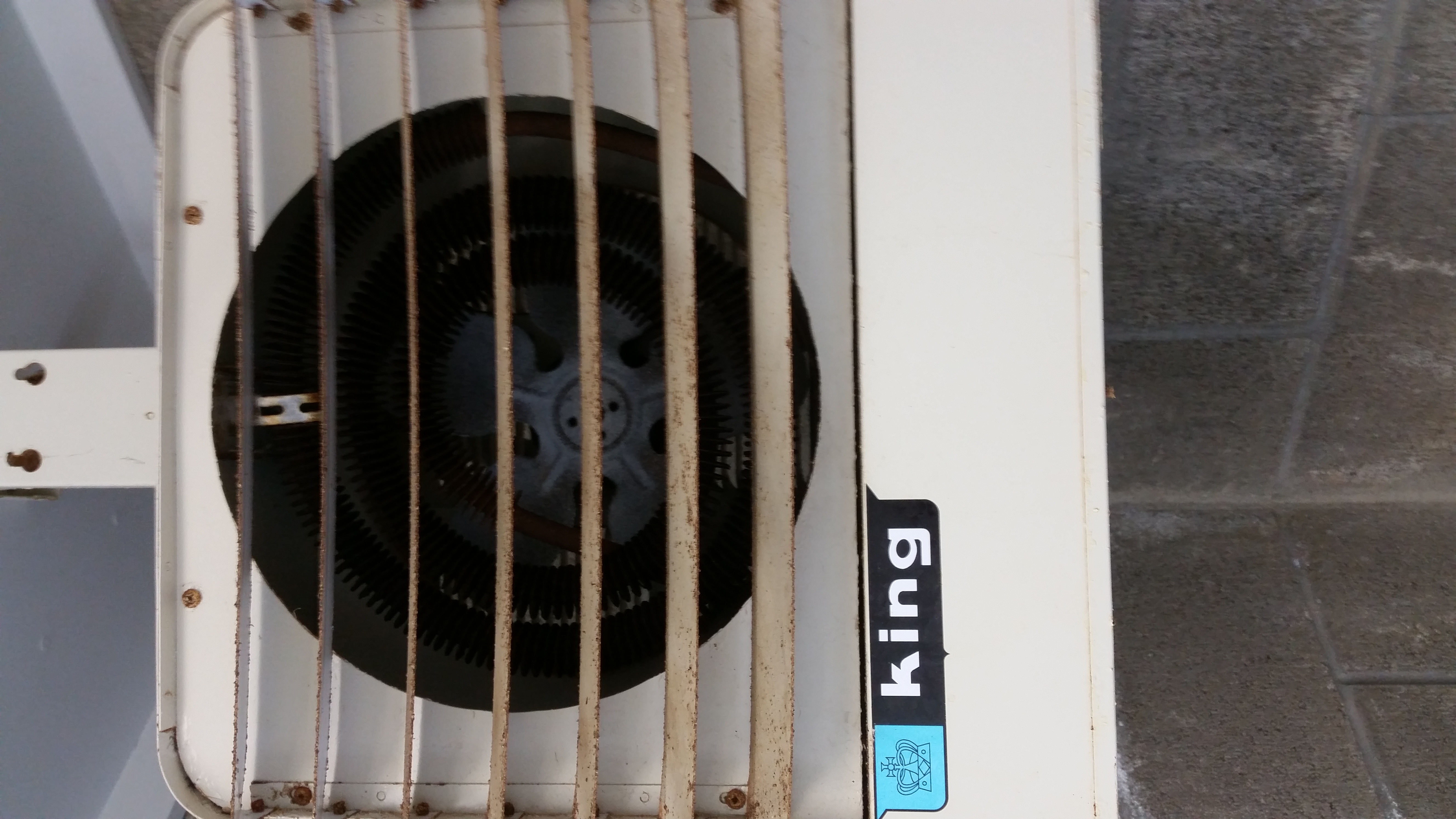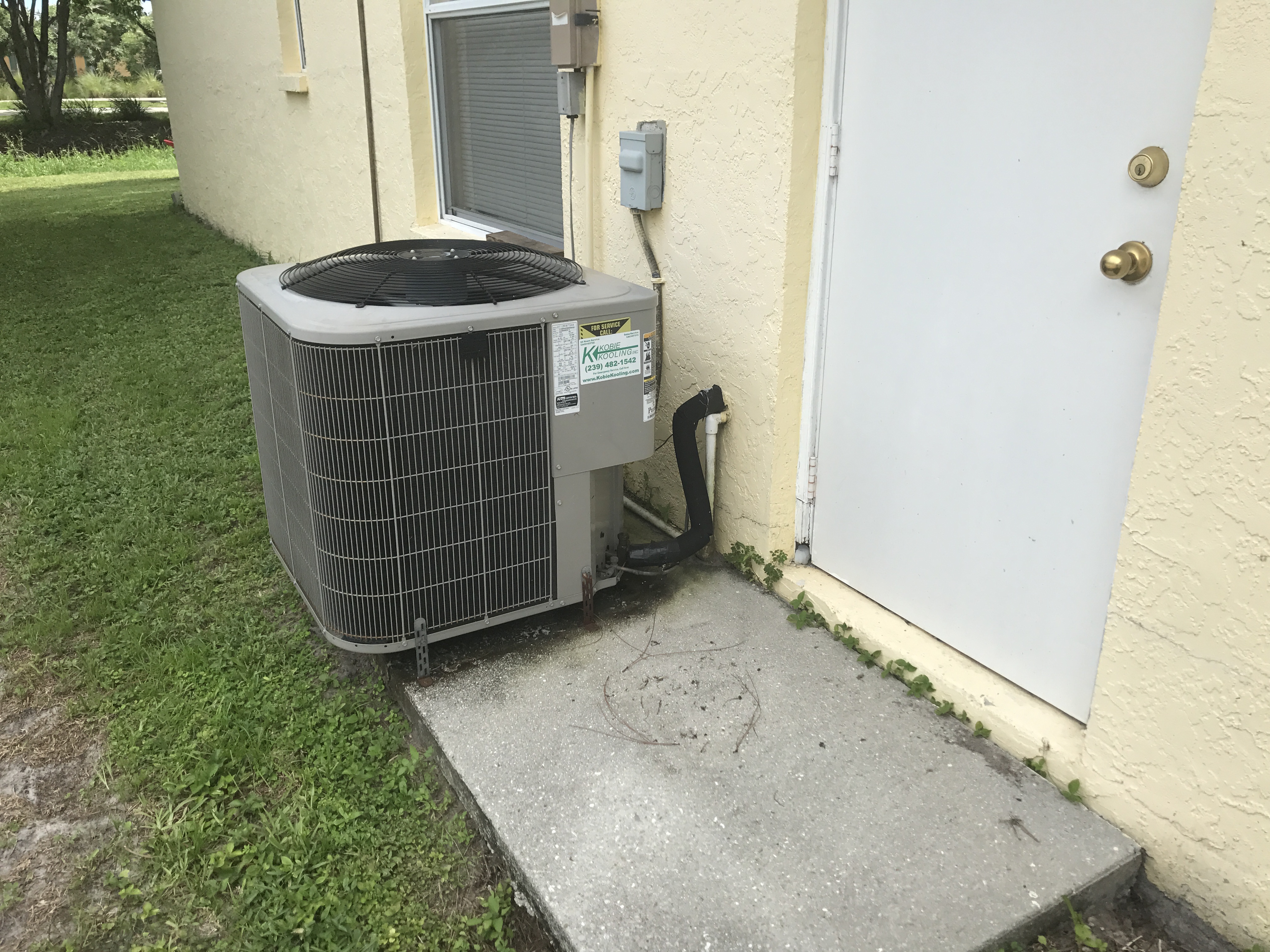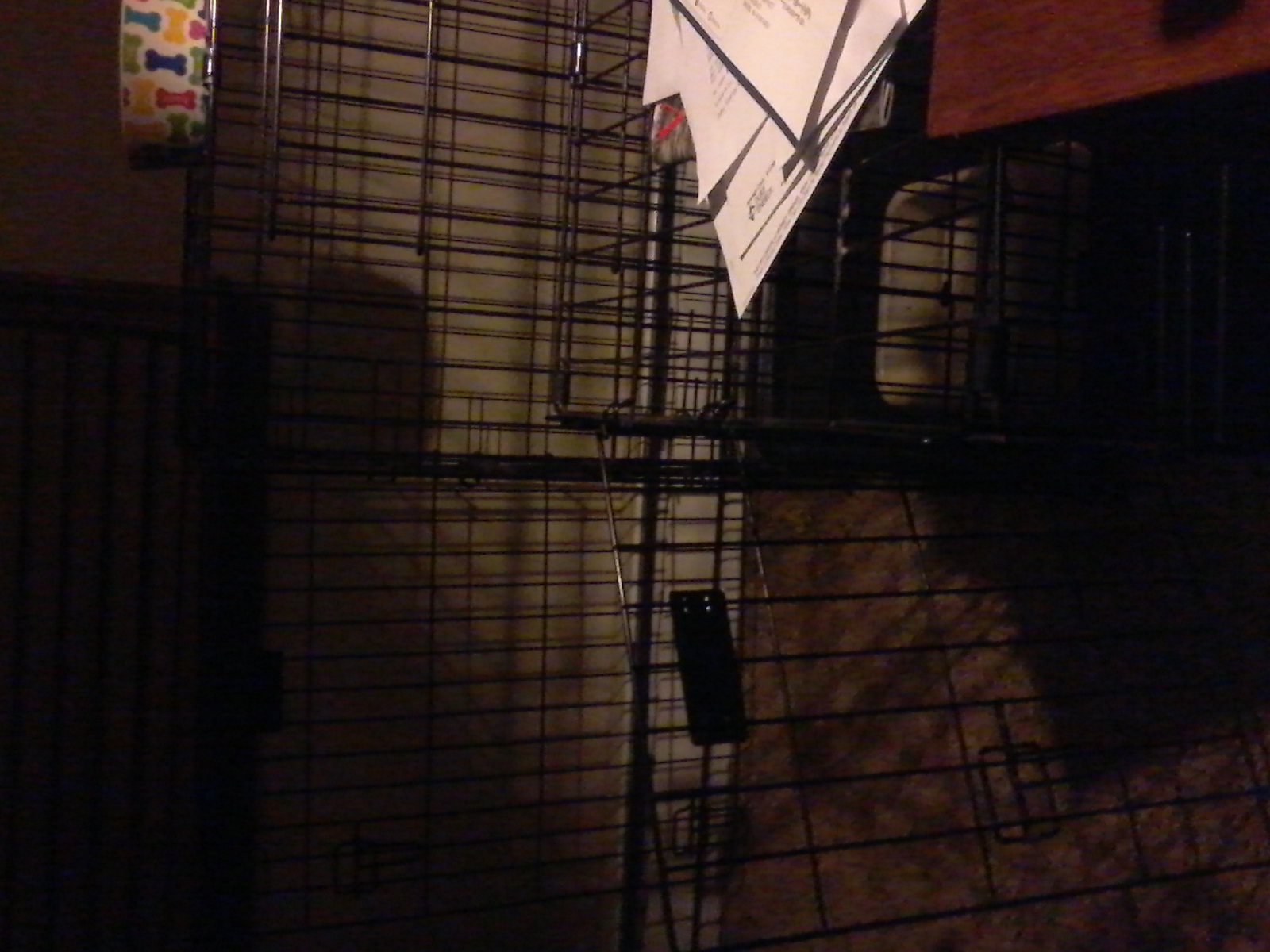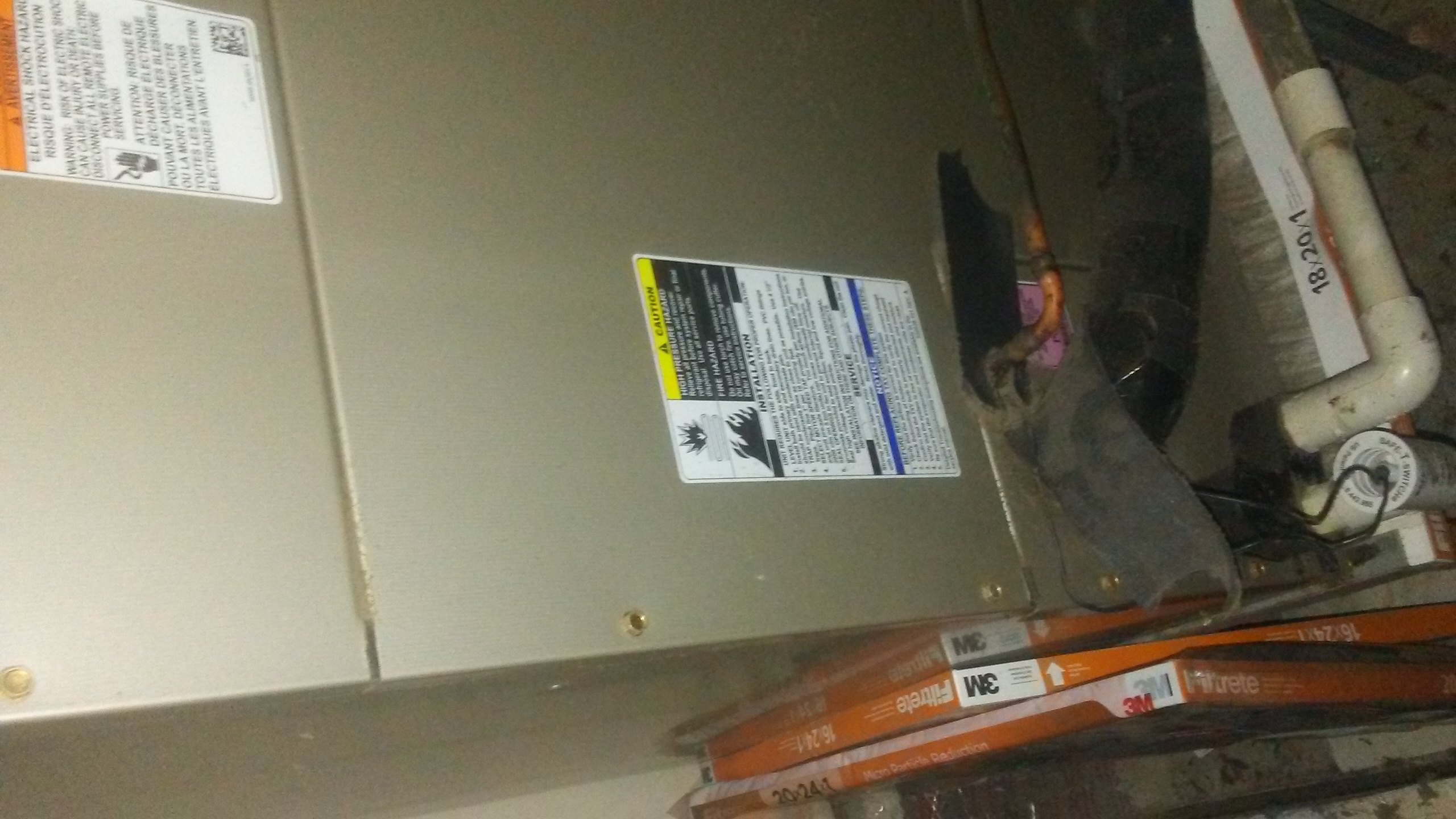Trane heat pump:This unit appears to be in good condition it is a 1994 model. when operating everything seems to be working properly.I did not see any noticeable leaks or frosting on lines.However i did not see any service or maintenance data during inspection,you may want to check to see when the last time the unit was serviced by a HVAC TECHNICIAN.
HVAC DUCT INSPECTION:I’ve learned how to do basic duct inspections and understand more about how the hvac unit works overall.I think what I’ve learned through the internachi training is to take my time while doing my inspection and give my client as much detail as possible,but also suggest when a problem is found,they use a qualified hvac technician when making repairs.
This is a picture of an outdoor air conditioning unit from a recent inspection I did, and the client stated that it was not that old, but that it had tripped the breaker often. During my inspection, I found several large bugs, and lizards inside the cabinet, around the unit, and as you can see, even a few dead ones from the fan blades. Of course, I informed her of the problem, and put it in my report.
I read the article about central air condition inspection/maintenance. I found it interesting because it focused on regular maintenance, which is likely the no.1 cause of premature system failures. Not many homeowners understand the importance of cleaning the coils, straitening fins, changing filters, lubricating motors and cleaning the grills and registers. These are all things a homeowner can do themselves, or hire a professional once a year, but regardless, this article brings attention to the importance of annual inspection and service, on top of just monthly or seasonal filter changing/cleaning.
The mechanical air filter in the home is coated in drywall joint compound dust. Air filters should be changed on a regular basis to prevent damage to the HVAC system. Higher utility bills can occur due to dirty air filters.

In a split system used for air conditioning there is a compressor and condenser coil located in the exterior unit. There are two copper lines connecting the exterior unit to the evaporator coil inside the central air handler. The system uses an expansion valve to reduce to liquid refrigerant pressure creating a cool gas inside the line and in the evaporator coil. The air inside the home passes over the evaporator coil. The air is cooled and the moisture in the air condenses on the evaporator coil and drop down to the condensate pan and runs out to the drain through the condensate tube. The refrigerant inside the evaporator coil heats back up and is pulled through the suction line back to the compressor where the refrigerant is compressed again and returned back to the liquid state.
I read the article “Backdrafting” which deals with the back flow of exhaust gases into the home from fuel burning water heaters, boilers and furnaces. Inspectors should be aware of this issue because of the potentially lethal gases that can enter the home in this way. Inspectors can use a smoke pen, lighter or match, or carbon monoxide sensor to help identify if this issue is occurring. Soot on top of a water heater can also be a visual indicator that this condition may exist.
The image shows an oil burning, circulating boiler with a single pipe distribution system. This boiler was in poor condition but was operable. Gray compound was used as a sealant around the burner chamber access, suggesting a poor fit and an attempt to prolong the useful life of the unit. The most recent service tag indicated that the unit was last cleaned in 2013.

This is the identification sticker on my home ac unit. According to this and the website Buildingcenter.org this unit was manufactured in the 5th week of 2003. Making it 14 years or at this point. This sticker also lets us know that this unit runs R22.
This is a RUUD up flow forced warm air furnace that is 8 years old. The photo shows the gas valve, burner assembly and draft fan for the heating unit. This heater appears to not have been cleaned recently and shows dirt and debris on the burners, gas valve, draft fan and also the top of the heater cabinet. Although the heater was operational at the time of inspection it is recommended that a qualified heating contractor clean and service this unit to ensure proper operation.

I read How to Get Real Estate Agents to Hand Out Your Cards. The idea of building props in a meeting not only gives you a break from speaking but it also gave the people watching something to touch and interact with. In my experience anytime people are up and participating they will be more likely to remember and apply the information that you are handing them. Also the added twist of putting inspection info on the info cards was priceless. I plan to fully utilize this plan.
The image chosen is of the refrigeration cycle. The refrigerant leaves the compressor as a high temp/high pressure vapor. It travels through the condenser where it changes to a high temp/high pressure liquid releasing heat to the outdoors. It then moves through the liquid line to the metering device where it becomes a low temp/low pressure liquid. This low temp/low pressure liquid then passes through he evaporator where the refrigerant boils off, absorbing heat from the space,and becomes a low temp/low pressure vapor and travels through the suction line and returns to the compressor to start the cycle again.
I read the Central Air Conditioning System Inspection article by Nick. Since I’m in the AC industry I knew Nick’s points were spot on. Twice a year maintenance is recommended and in most cases is required to maintain the manufacturers warranty. A clean coil, which should be done using a hose and spraying from inside out, will help transfer heat from the refrigerant to the outside are. If the condensor coil is packed full of dirt and debris than it cannot effectively do its job. Changing the air filter every 1-3 months is needed also. The frequency depends on the number of people and pets in house, open doors, etc.
The heating system make is a king commercial electric convection unit. The unit hangs from ceiling. The unit is installed in a chemical room to keep the chemicals at a balanced temperature. The chemical are causing conducive conditions and the unit is showing rust over the entire unit. The heating unit has an internal thermostat that was very hard to turn on due to corrosion,when I turn the unit on chunks of rust blew out of the unit until it settled out.This unit should be serviced by a certified technician for further evaluation.
Photo is of my AC in the house I am renting. It’s a 2.5 ton straight cool unit matched to an up flow air handler. The AC is on the existing concrete pad which is not large enough for this particular condenser. Per code, it is held in place with four hurricane straps. Current code also says that the armaflex should be painted with a UV coating and it is not. They have installed the filter dryer inside. This is the preferred method as it keeps the dryer out of the elements. Disconnect is within a few feet.
Inspecting compression cooling systems. There are many things to consider when inspecting an air conditioning system since most air conditioning systems cool,heat and condition indoor air quality.The sizing of a air conditioning system in a home is critical that it not be under sized or even over sized for the home it’s servicing. There is alot components that an inspector needs to look at and report on when inspecting a air conditioning system. Great article to read on.
Examination of the installed electric baseboard heaters controlled by a wall-mounted dial was conducted throughout the home. All baseboard installed, electric heating devices worked appropriately, with the exception on the unit installed in the first floor main room on the south wall. That unit appeared to be, in the inspector’s opinion, too close to furniture and pet enclosures to operate during the time the home was inspected.
The article I read, titled “Become a HUD 203K Consultant” gave a very brief explanation of the HUD 203K program as well as a succint accounting of the requirements to participate. I would have liked to have also had an equally succint account of the program itself.
This is a standard panel filter that is common in many HVAC systems. Panel air filters are used to remove dust and allergens from the air and are approximately 10% efficient in particle removal. They should be located in an easy to access location and not be obstructed by furniture or other household items. Panel filters should be changed approximately every 30 days unless the filter specifies differently. Dirty filters that do not get replaced regularly can cause the air handler to run less efficiently than designed thus causing premature failure of parts or increased run time and higher utility bills.
